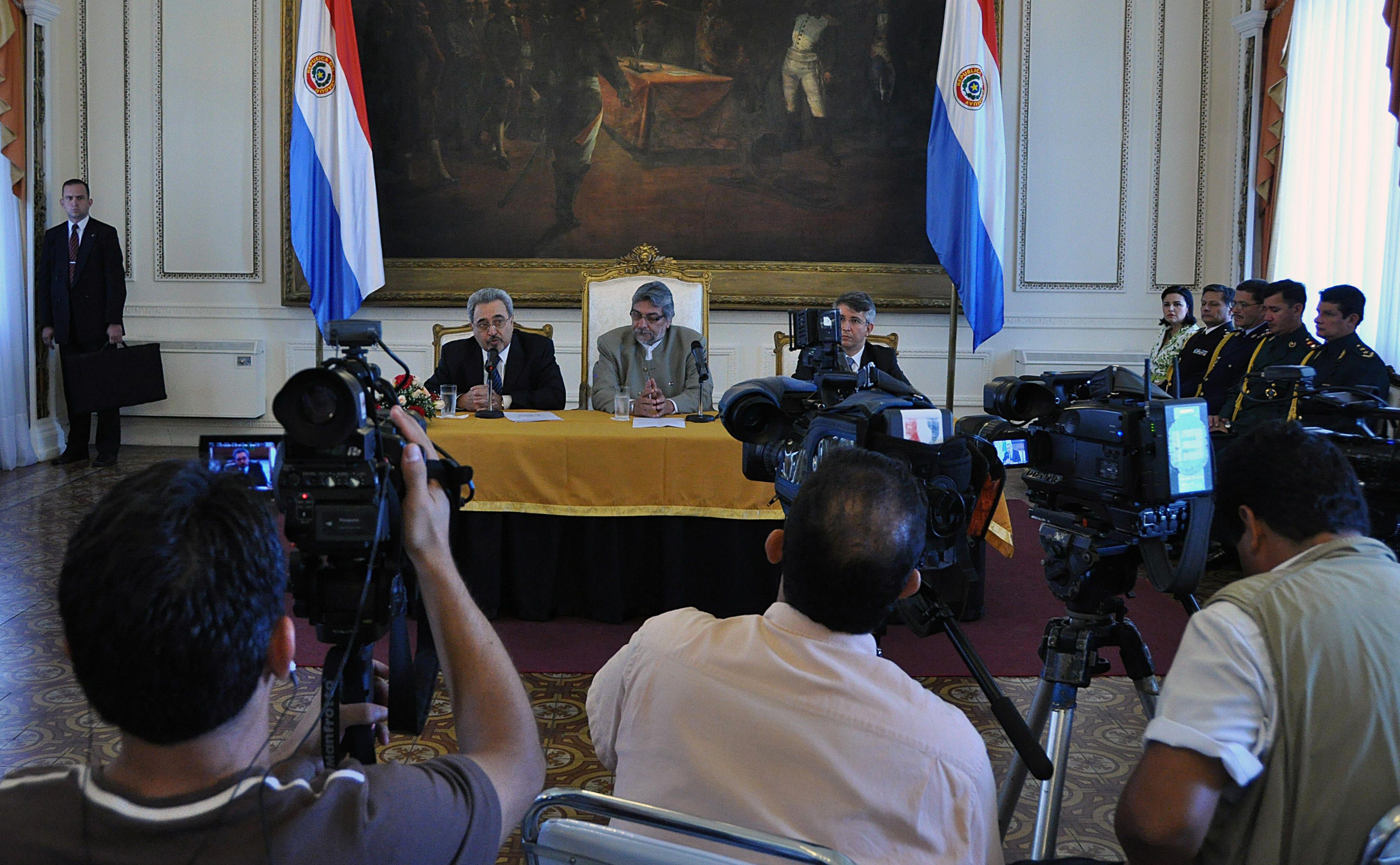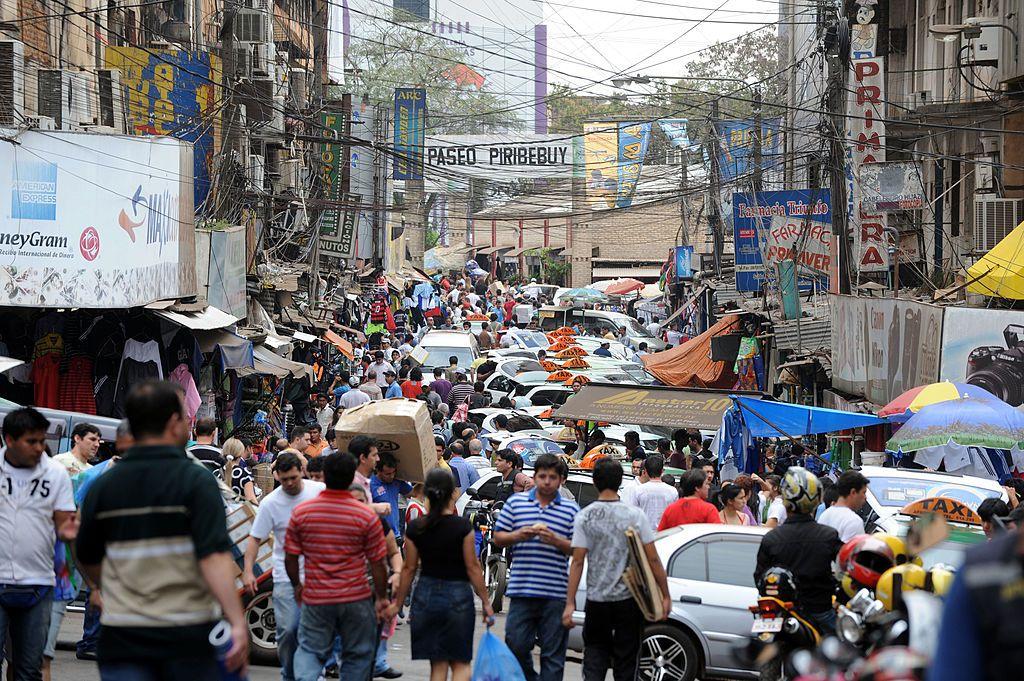This formula means that the three most important taxes – value added tax (VAT), personal income and business income – have the same rate: 10%.
This percentage is the lowest in all of Latin America for the three taxes, with the exception of VAT in Panama.
This characteristic, which has become public policy, is indicated by the rulers of the South American country as one of the strengths for developing its economy and receiving investments that could go to other countries in the region.
“Paraguay’s attractive 10-10-10 regime (…) has also attracted the attention of international investors and represents one of the main pillars of the country’s attractive business environment,” said a government note published by the World Tourism Organization. beginning of this year.
President Santiago Peña, who took office in mid-August, stressed during the election campaign that taxes would not be changed.
“We are not going to raise taxes on entrepreneurs, companies or anyone else, because startups have a big impact where they are located. They bring direct jobs, social security and countless benefits to the region such as increased commercial traffic, corporate social responsibility programs and much more,” he said in a video posted on his social media.
“They play a key role in the development of all corners of Paraguay” and “they are the ones who contribute in the form of taxes so that the state can develop the country by carrying out works and programs for the people,” he added.
“If they are doing well, then we are all doing well,” the current president concluded.
Peña repeated the idea when speaking to business leaders this month.
“As president of the republic, I am not interested in collecting taxes. [ni] benefit the industry [sino] in creating jobs in the Republic of Paraguay, (…) because employment is the best social policy a country can pursue,” he said.
The President’s stated goal is to increase tax collection by strengthening controls on VAT evasion, which in the case of VAT reaches 31%, higher than the regional average, according to the Economic Commission for Latin America and the Caribbean (ECLAC) .
Sequence of tax reforms
The current tax structure in Paraguay began to take shape in 1992 with a tax reform that created the VAT and set it to rise to 10% two years later.
In 2004, he sharply cut corporate income tax from 30% to 10%, and the argument at the time was to cut taxes to formally register more companies and thus expand the tax base, the then finance minister explained to BBC Mundo. , Dionisio Borda.
“Our idea was that if it was cheaper for companies to do double-entry bookkeeping than to have double-entry bookkeeping – one real and one disguised for the government – then more people would pay all their taxes,” he said.
“In addition, we reduced the corporate income tax to include a personal income tax, which until now in Paraguay did not exist because it came from tradition. stronist (former de facto president Alfredo Stroessner) that it was a communist tax,” he added.
However, it was not until 2012 that the country introduced a personal income tax, and when this happened, a flat rate of 10% was established instead of establishing a progressive scale as Borda had planned.
To pay personal income tax, you must earn more than 120 minimum wages per year, but in addition, there are many expenses that can be deducted – housing, education, health care, clothing and others – so there are very few of them. they end up paying for it.
The last tax reform was implemented in 2020; Taxes paid by companies were unified and some benefits were abolished.
Despite what authorities consider a favorable tax environment for attracting capital, foreign direct investment in Paraguay remains at around 1%, significantly lower than in other South American countries.
One of the countries with the lowest taxes
Despite the benefits provided by Paraguay’s political authorities, this vision contrasts with those like Borda and international organizations who understand that more funds need to be raised to expand social policies.
Taxes can be divided into two groups: direct taxes, such as those on the income of individuals or businesses, and indirect taxes, such as VAT or taxes on specific products.
Direct taxes are often considered fairer because they allow different tax brackets to be determined based on the purchasing power of each taxpayer, whereas with VAT everyone – poor and rich – pays the same percentage. And while the poor pay VAT on all their income (because they spend all their money), the rich devote a small portion of their income to consumption.
A system in which everyone charges the same rates is called regressive, and a system in which those with more money pay more is called progressive.
“The rates are extremely low and the system continues to be regressive,” Borda said.



The VAT collects nearly half of the US$2.6 billion a year in taxes, while corporate income accounts for nearly 40% and personal income accounts for 2.3%.
The government highlights that indirect taxes fell from 60% to 51% between 2019 and 2022.
The original personal income tax “arrived crippled” the day it was approved by Congress after several delays, Borda said.
“He lobby Business here is very strong and has managed to convince the political system “not to cover more taxpayers,” the economist said.
Borda said there was a “minimal improvement” in this tax due to the 2020 reform.
According to the organization, fiscal pressure, defined as the ratio between taxes and GDP, in Paraguay is 14%, the second lowest in the region after Panama, below the average for Latin America (22%) and developed countries (34%). on economic cooperation and development.
Globally, Paraguay has the 26th lowest tax revenue relative to the size of its economy, according to the World Bank.



“Low tax pressure limits the ability to finance spending on universal rights such as health, education, security, housing, food, in a country where the poverty rate is 25% and there is high inequality,” he said.Reil.
Paraguay is one of the poorest countries in South America in terms of gross domestic product per capita.
According to INE, two out of every three Paraguayan workers work informally, so they have no social security or pension contributions.
One in four people live on less than 825,000 guarani per month (about US$112) and are therefore poor.
Some data is encouraging: the poverty rate fell from 45% to 25% between 1999 and 2022, and the poverty rate fell from 11.5% to 5.6%.
Inequality between the poorest and the richest has also decreased in recent years and is in the middle of the South American Gini Index table.
Meanwhile, GDP in constant terms has doubled in the 21st century, almost twice the growth rate of Latin America and the Caribbean as a whole.
Sustainable development
The International Monetary Fund has told Paraguay it should continue with tax changes.
“In addition to further improving tax administration, authorities should review Paraguay’s specific tax regimes for specific sectors and activities and consider another tax reform that goes beyond the improvements adopted in 2020,” the agency said in mid-2020.
“Increasing domestic tax collection remains essential to ensure sufficient investment in infrastructure, health and education for Paraguayan citizens, which will increase productivity to ensure future growth and shared prosperity,” he added on June 8 in the first review of his program. with Paraguay.



According to the Inter-American Development Bank (IDB), “countries with high taxes also tend to be countries with higher spending.”
“In low-tax countries, assuming a minimum level of efficiency, broadening the tax base can bring significant benefits,” the IDB says.
According to a note published on the IDB website, “despite recent socio-economic achievements, important development challenges remain that place Paraguay on a path to sustainable development.”
He understands that there is a gap in “access to basic services” and that there is a need to strive for “better coverage and targeting of social spending.”
But under a program in which it worked with Paraguay to “strengthen tax policy and governance and improve public expenditure management,” the IDB supported measures “to sustainably close development gaps while maintaining Paraguay’s competitive advantage through low tax rates.”



Remember you can receive notifications from BBC News Mundo. Download the latest version of our app and activate it so you don’t miss out on our best content.
Source: La Opinion
Alfred Hart is an accomplished journalist known for his expert analysis and commentary on global affairs. He currently works as a writer at 24 news breaker, where he provides readers with in-depth coverage of the most pressing issues affecting the world today. With a keen insight and a deep understanding of international politics and economics, Alfred’s writing is a must-read for anyone seeking a deeper understanding of the world we live in.
